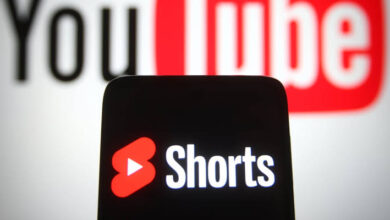Why Do Universities Advertise Online?

As the digital world continues to engrave its influence across various sectors, universities are no exception. Universities are deftly shifting their marketing endeavors from traditional techniques to modern digital methods; not just following a trend but strategically embracing the progressive metamorphosis of higher education and technological landscapes.
The Digital Transition in University Marketing
The conventional approach for universities to captivate prospecting students was through brochures, campus tours, and academic fairs. While these means maintain their relevance today, they do not suffice in an era where the internet is the principal repository of information. Internet advertising provides universities with a more engaging, personalized, and expansive platform for reaching potential students. By capitalizing on social media, search engines, and email campaigns, universities have the liberty to target specific demographics, thereby customizing their messages to align with diverse audiences.
Harnessing the Power of Diversity Through Digital Platforms
A salient advantage of online advertising lies in its capability to attract a wider and diverse audience. Notably, the digital transition helps universities connect with non-traditional students—individuals who may be harnessing the power of education while working, or those who are resuming their academic journey after a hiatus. It also paves the way for international applicants looking for global opportunities. Digital platforms eliminate geographical limitations, allowing universities to exhibit their programs to students globally, birthing a tapestry of cultural and intellectual diversity within their academic communities.
The Unforeseen Catalyst: COVID-19
The unprecedented COVID-19 pandemic has sparked significant changes across diverse sectors, and the field of education is no stranger. As lockdown and social distancing measures took place, universities were compelled to adapt swiftly to virtual learning and online student services. Simultaneously, marketing strategies had to evolve to keep up. The pandemic expedited the adoption of digital marketing in higher education, making it an indispensable strategy rather than a choice. Universities started realizing the need to match students’ digital presence to maintain their enrollment figures and brand reputation, and they did this with the help of agencies such as King Kong.
This digital transition isn’t just a temporary response to the pandemic; it symbolizes an enduring change that will incessantly mold university outreach strategies. This forced adaptability has triggered innovations and efficiencies that are likely to become permanent, contributing to future strategic planning and development.
The New Era of University Marketing
Transitioning to online advertising signals the dawn of a new era in university marketing—an era characterized by agility, inclusivity, and engagement. Universities now have the privilege of leveraging data analytics to monitor their campaigns’ performance in real-time, making necessary tweaks to optimize efficacy. This insight level fosters responsible and resource-efficient marketing strategies.
Moreover, digital platforms offer interactive content, such as virtual tours and webinars, providing aspiring students with immersive experiences without having to leave their homes. This approach doesn’t just attract students but equips them with crucial information to make informed decisions about their educational paths.
The Final Word
In conclusion, the shift to online advertising by universities is not merely a response to the evolving digital landscape; it represents a profound, strategic shift in how institutions connect with and recruit students. By adopting digital platforms, universities are broadening their reach beyond traditional demographics, engaging students from various backgrounds, locations, and walks of life. This shift is particularly significant in light of the COVID-19 pandemic, which underscored the importance of being agile and adaptable to rapid global changes. Universities have had to rethink their outreach strategies, not only to maintain enrollment numbers but to build a lasting reputation for accessibility and innovation. Digital platforms allow for a more inclusive approach, as they make higher education information and experiences accessible to students who may not have the means or flexibility to visit a campus physically.
Moreover, this transition ensures universities remain competitive and relevant in an era where prospective students expect seamless online experiences, much like those provided by other industries. Offering interactive digital content, such as virtual campus tours and webinars, not only attracts students but also immerses them in the university experience early on. This helps prospective students feel informed and connected to the institution before even setting foot on campus, thus fostering a stronger sense of belonging and community.
Ultimately, the evolution toward digital marketing empowers universities to align with the lifestyles, values, and preferences of today’s students, ensuring they can continue to engage, educate, and inspire future generations. This shift is more than a temporary adjustment; it is a fundamental transformation that positions universities to thrive in an increasingly digital world. By investing in online advertising, universities demonstrate their commitment to adapting and enhancing their educational offerings, creating an inclusive and accessible environment for students worldwide. This approach not only keeps universities relevant in the present but lays a robust foundation for future growth and innovation in the higher education sector.





